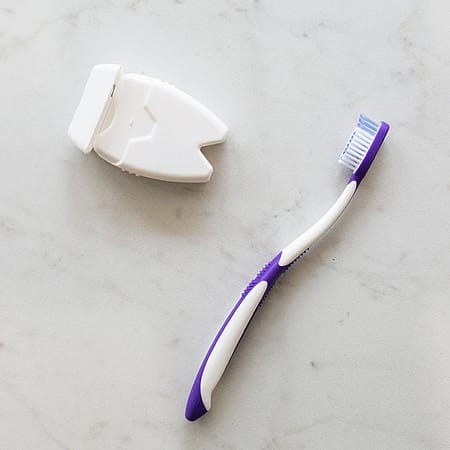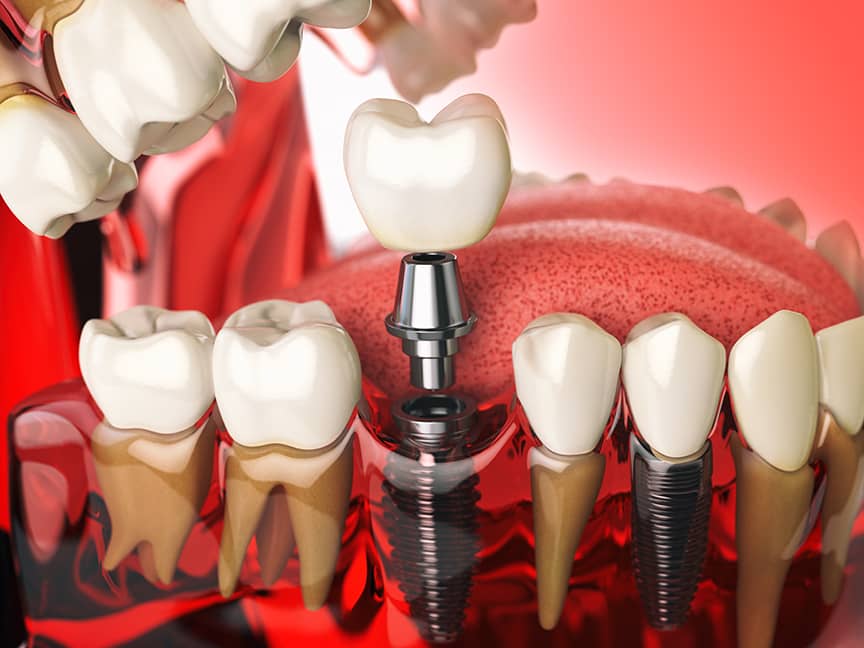It goes without saying, teeth form an essential part of our everyday existence; from eating, speaking and smiling, to making us look great and feel confident. However, when our teeth fall out, need to be extracted, or are missing for another reason, it affects our ability to do these things. Fortunately, our missing teeth can be replaced and a new smile regained. Below you’ll find methods of replacing your missing teeth and see which could be suitable for your unique situation.

What are the causes of missing teeth?
You may be missing teeth for a number of different reasons. The most common types of teeth lost include the wisdom teeth, chewing molar and front teeth. Reasons for having these and other missing teeth include:
- Untreated cavities and tooth decay
- Gum disease
- Injury due to sports, other physical activity or accident
- Genetic factors causing missing teeth
- Tooth extraction due to over-crowding or pain, such as in wisdom teeth
- Age is also a risk factor for missing teeth, the older you get the higher your chance of missing a tooth
- Males are at a higher risk of missing teeth than women
- Poor oral hygiene and lack of professional dental care
- Smoking and high sugar intake causing tooth decay
- Persons with medical issues such as rheumatoid arthritis or diabetes are also at a higher risk of having missing teeth
How do missing teeth affect you?
Whether you’re missing just one tooth, a number of teeth, or a full set of teeth, it can affect your everyday life greatly:
- You may appear older and your jaw and face shape can look asymmetric or sunken.
- You may have trouble with your essential oral functions such chewing food and swallowing.
- You may get food stuck in gums which can cause complications such as gum disease, bad breath, and infection.
- Your speech may be impaired by missing teeth or your mouth may make unexpected noises.
- There may be gaps in your smile.
- You will have limited jaw support and support of other teeth. Limited support of other teeth can cause shifts in appearance and functionality of the jaw.
Treatment Options for Replacing Missing Teeth
It’s important to replace missing teeth in order to avoid obstruction to your oral functions. Treatment options include dental implants, bridges or dentures. For all tooth replacement options, regular professional and home oral care is needed to maintain them for life.
Option 1: Dental implants
Dental implants are used when the tooth is completely missing and there is no abutment (stump of the tooth) left. This is the most durable, natural, and permanent method for tooth replacement.
To place dental implants, dental surgery is necessary. This will involve an artificial titanium root being attached to the jaw. After some recovery time of about 2-3 months, allowing for the jaw bone to grow around the new artificial root/s, a crown will be fitted over each root to mimic natural looking teeth. Crowns for dental implants work much like a ‘cap’ over an existing broken tooth.
Dental implants can replace one or more teeth, and the process may involve removing current teeth if necessary. As the implants are fitted to the jaw bone, they are very strong and allow full use of chewing and eating food as you would with your natural teeth.
Dental implants provide many benefits as they don’t need to ever be removed, replaced or fitted again. They stand alone, and don’t require support from other elements such as wires or other teeth. They are also the most permanent solution to missing teeth.
Option 2: Bridges
Bridges make use of existing teeth to support the prosthetic tooth and fill the empty space. The teeth surrounding the missing tooth will act as a ‘bridge’ for the replacement.
In order for these to fill in the space the existing tooth or teeth are filed back to make room for the bridge or crown on top. After this, an impression is made to create the right fit the bridge. Your dentist will choose a matching colour to your own teeth, and the bridge will be fitted precisely.
Once your prosthetic is created, it is cemented permanently into your mouth. Good oral hygiene will ensure longevity. If the remaining tooth sitting beneath the bridge becomes decayed, it will need to be replaced. It will also be important to avoid chewing very hard objects and food such as ice to prevent chips and breakage. Otherwise, this method of tooth replacement can last a lifetime.
Option 3: Dentures
Dentures are a very common replacement for missing teeth which can be removed and put back in the mouth daily. New denture technology and materials mean modern dentures are made to look very natural, are comfortable, and can either be fitted for partial missing teeth or a full set.
In order to prepare a mouth for dentures your dentist will take an impression of your mouth. It will then be determined what types of dentures are most suitable. A full set will involve having a gum-coloured acrylic base which fits over the gums in the shape of a ‘U’. Partial dentures fit over the teeth and have a hidden metal framework fitting on the existing teeth to support them.
Dentures require no surgery or downtime, however can take a little getting used to. Over time they may need to be realigned or adjusted, and of course cleaned daily just as you would regular teeth.
Choosing an option to replace your missing teeth
No matter the reason for your missing teeth, it’s important to replace them in order to regain full oral function and appearance of natural teeth, as well your smile. Replacing teeth can not only help you to chew, speak and smile again, but can also help you regain confidence, which can often be lost with missing teeth.
Seeking help from your oral health care professional is the first step to replacing your missing teeth. At Coburg Hill Oral Care, we can talk you through the best possible course of action to replace your teeth and suit your budget. Click through to learn more about us or call us today at 9041 5301 to book an appointment.



